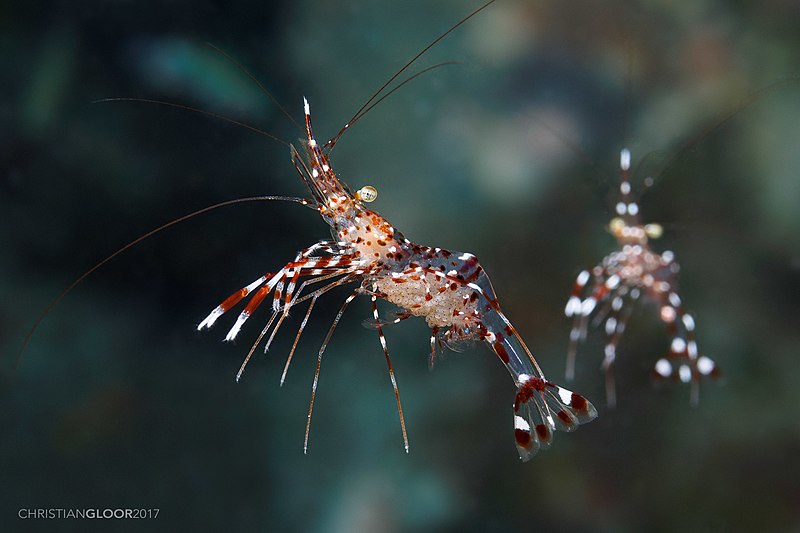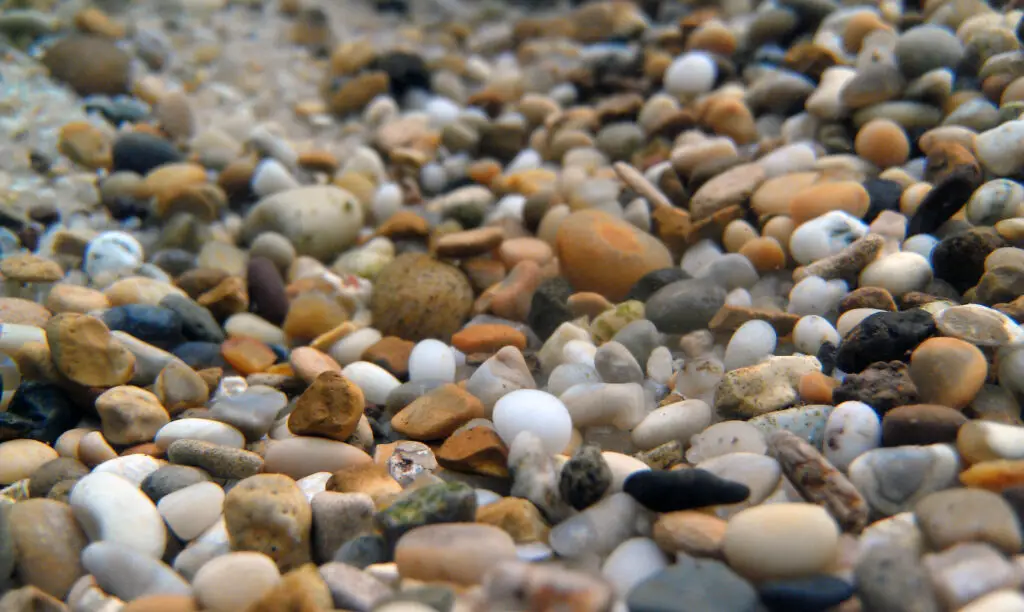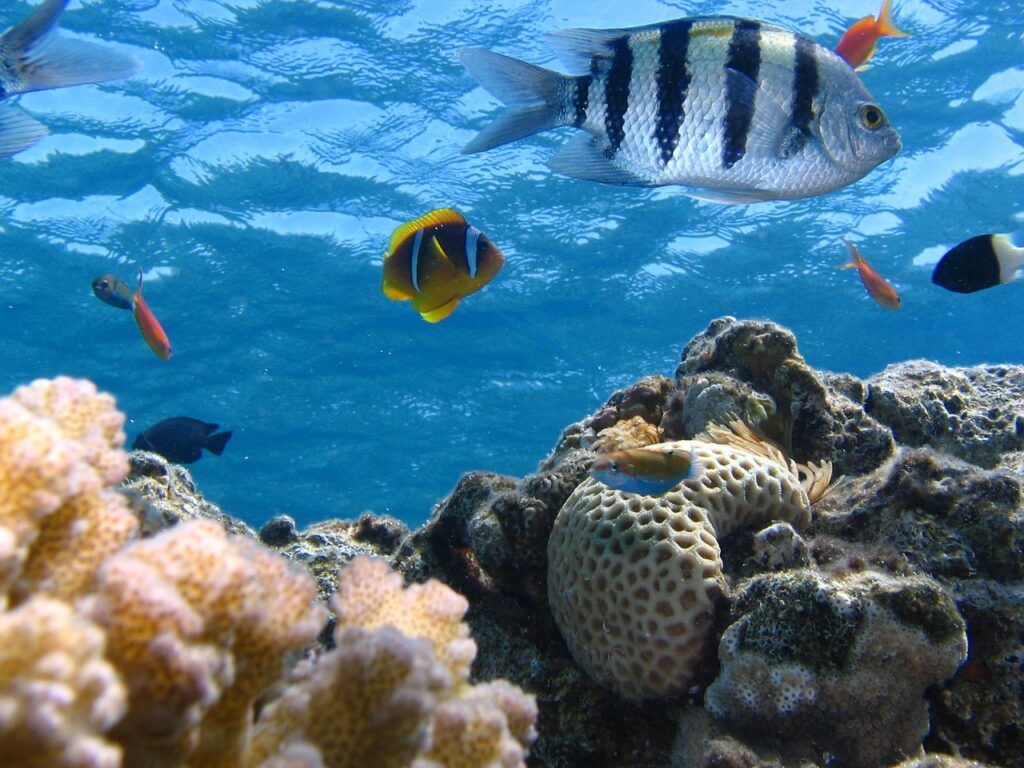If you have cleaner shrimp in your aquarium, you might have questions about raising baby cleaner shrimp. How do cleaner shrimp breed? How fast will they grow? What do they eat?
So, you have some cleaner shrimp in your saltwater aquarium, and they are thriving. And then you wake up one day to find hundreds of baby cleaner shrimp floating around in the water! What now? Keep reading to find out all about raising baby cleaner shrimplets.
Will cleaner shrimp breed?
The answer to this question is yes, and often. If you have a bonded breeding pair of cleaner shrimp, they may produce hundreds of eggs every few weeks. The eggs take between two and three weeks to hatch, but many may not survive that long. The eggs are susceptible to predators and are very delicate. Their environment must be exactly right for them to hatch.
Most cleaner shrimps are simultaneous hermaphrodites, meaning they carry both female and male reproductive organs. Most begin life as a male and develop female organs once they’ve grown to maturity and have molted a few times.
It’s possible that you bought a cleaner shrimp from an aquarium store, brought it home, and discovered babies in your tank the next week. You purchased a shrimp that already had fertilized eggs on board. It only takes two shrimp to make babies. So, if you want more, get yourself another shrimp to form a breeding pair.
How to hatch cleaner shrimp eggs
Breeding cleaner shrimp is easy because of their hermaphroditic tendencies and the fact that they will produce a large number of eggs so frequently. The hard part is raising those eggs to adulthood, or even hatching them at all. It’s such a difficult task that most people don’t even try. Most captive cleaner shrimp were harvested live from the ocean.
Removing the eggs as soon as they hatch is the primary task. Of course, the mother shrimp will most likely drop her eggs at night. Unless you arrange a stakeout, you may miss the moment. If you manage to separate the eggs immediately, you have a shot at hatching them. You are most likely to get the best result if the eggs are removed and isolated in their own tank.
Once the eggs hatch, using a Kreisel set up for at least four or five months will give them the best chance of survival. A Kreisel keeps the babies separate from the filtration systems and safe from the water flow. They are very susceptible to water flow, filtration systems, and an unstable environment. Some babies will stop maturing and cease growing entirely if conditions are not ideal for survival.
How long does it take for baby cleaner shrimp to grow?
Cleaner shrimp grow very slowly. Baby cleaner shrimp go through a four-stage life cycle and take several months to a year to reach maturity. They typically reach between two and three inches in length once they become adults and have a lifespan of two to four years. But raising baby cleaner shrimp is a difficult task because they are very delicate and susceptible to even subtle changes in your tank.
Cleaner shrimp need a tropical temperature of between 76- and 80-degrees Fahrenheit and a very specific PH level. Your tank must also be free of nitrates and copper, which will harm cleaner shrimp. It may help to supplement with iodine. They need a soft light source, plenty of live rocks to hide behind, and a proper food source to thrive.
Raising shrimplets is especially hard because they provide an ample food source for most aquarium inhabitants, including their parents! They also are in danger from the filter system in your tank, which can easily suck them up. If you want to raise your baby cleaner shrimps, you should make accommodations to keep them safe.
Seperating baby cleaner shrimp
Baby cleaner shrimp need to be kept separate from the rest of the inhabitants of your aquarium. If you leave baby cleaner shrimp in the tank with most other species of fish or shrimp, they will quickly be seen as dinner and will not survive.
You can raise multiple shrimp together, but remember that the more shrimp you have in your tank, the bigger the tank needs to be. Some cleaner breeds can be territorial, and they may see other shrimp as competition. This behavior could cause fighting between your shrimp.
Most experts say that a breeding pair of two cleaner shrimp per tank is ideal. However, they can live in larger groups if they have ample space to set up their territory and feel safe.
What do baby cleaner shrimp eat?
Cleaner shrimp are omnivorous, meaning they eat both plant material and meat. They feast on the parasites on the flesh of fish, dead fish tissue, and the mucus present on fish. This behavior of “cleaning” fish is where they get their name, but this diet is not enough to sustain them.
Adult cleaner shrimp are not picky about their food source. Any freeze-dried fish flakes or pellets will be fine for them. Supplementing their diet with live marine meat is also recommended.
When feeding baby cleaner shrimp, the same rules apply. However, if you want to give your shrimplets the best chance of survival, you may want to experiment with some specially fortified food. A diet targeted to their needs will ensure they receive the best mix of nutrients and calories.
Do baby cleaner shrimp eat brine?
Because cleaner shrimp are omnivorous and will eat marine meat sources, brine shrimp or mysid shrimp are great choices for feeding your cleaner shrimp. You can target feed certain live prey, like brine shrimp, using a pipette to guarantee your cleaner shrimp are getting their fair share of the food.
Conclusion
Keeping cleaner shrimp in your saltwater aquarium can be both beneficial and a lot of fun. They are colorful creatures and will certainly add some life to your biome. However, if you want to raise baby cleaner shrimp for anything more than fodder for your other aquatic inhabitants, it will take time and careful planning to raise them to adulthood. Good luck and happy shrimping!



